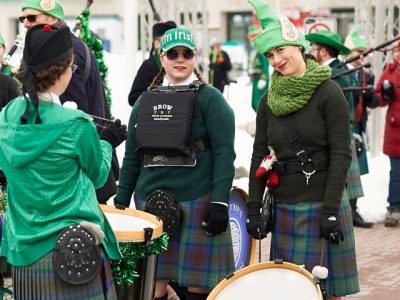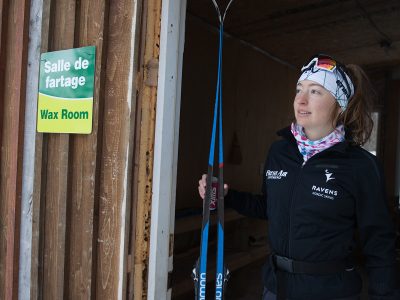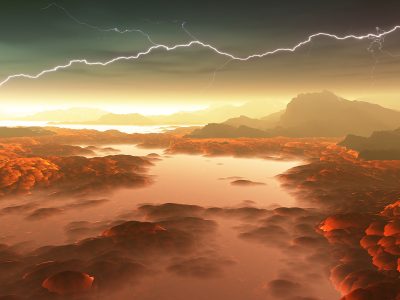By Dan Rubinstein
Photos by Andrea Reid/Reef to Aquarium
Even though she was born and raised on the opposite side of Canada and has done research on fish in Africa, Asia and Oceania, Carleton University PhD student and National Geographic Explorer, Andrea Reid, was probably destined to study Pacific salmon.
As both a staple food and a source of artistic inspiration, the fish is central to the culture and identity of Canada’s west coast First Nations, including the Nisga’a, whose traditional territory encompasses the mountainous Nass River watershed northeast of Prince Rupert, B.C.
Reid and her father are members of the Nisga’a Nation, and while she was aware of her Indigenous heritage growing up with her Irish-Canadian mother on Prince Edward Island, it wasn’t a huge part of her life.
Then she travelled to the Nass River valley for the first time as a PhD student — and it felt like she had come home.
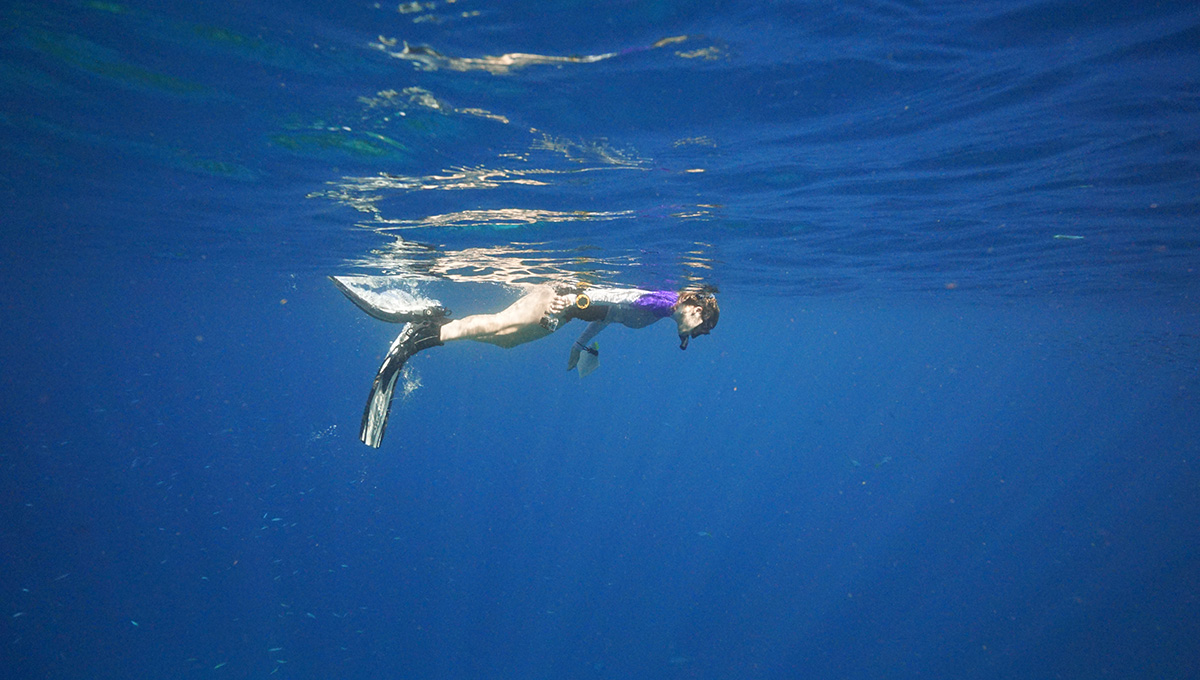
Andrea Reid (Credit: Mikayla Wujec)
“This work is a way to reconnect with and be useful to my culture,” says Reid, whose doctoral fish research blends ecology, physiology and anthropology to explore how Pacific salmon fisheries can become more sustainable. “It’s a way to give back.”
Whether she’s aboard an ocean-going commercial fishing vessel for several days to tag salmon, tracking migration to spawning grounds using radio telemetry, seine-netting fish in B.C. rivers to take tissue samples from their gills for molecular health analysis in the lab, interviewing Elders about traditional fisheries management, or running a science camp for kids in the Nisga’a village of Gingolx, Reid is in her element.
Like a salmon that inexorably returns to the river where it was born to spawn, she was meant to be here, doing this.
“I love what I do, and there really isn’t a clear distinction between my work and my life,” says Reid, reflecting, in a sense, the Indigenous idea of interconnectedness between natural and human worlds. “This is my both my career and my passion.”
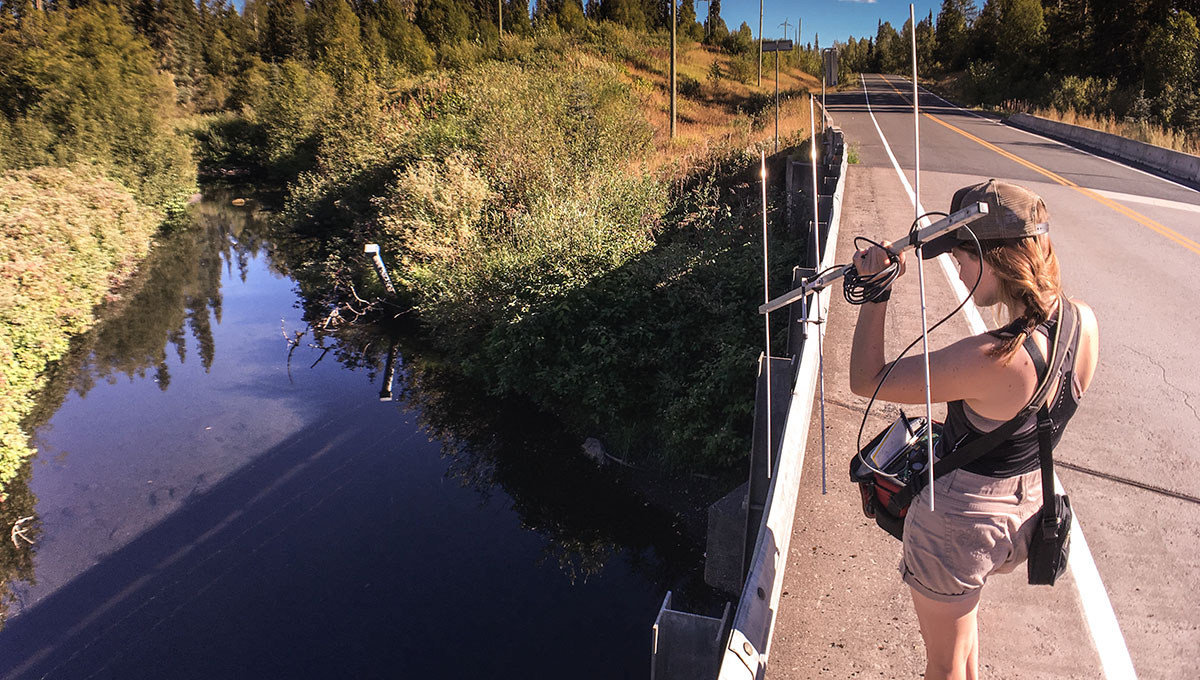
A Love for Water
As a girl, Reid lived 10 minutes from the beach in P.E.I. and spent as much time as possible swimming in the ocean, collecting rocks and shells, and looking at the colourful treasures that washed ashore.
With a pack of four pals, equipped by a friend’s father with snorkels and backpacks full of snacks, Reid went on “expeditions” to the local pond, gaining a sense of independence and competence in nature. She also began to take note of the endless interplay between people and aquatic environments.
After earning an undergraduate degree in Environmental Science at McGill University, she moved on to a master’s program in Biology at McGill, studying several species of fish that survived the decimating impact of the invasive Nile perch introduced to boost the fishing industry in Lake Victoria, which is bordered by Tanzania, Uganda and Kenya.
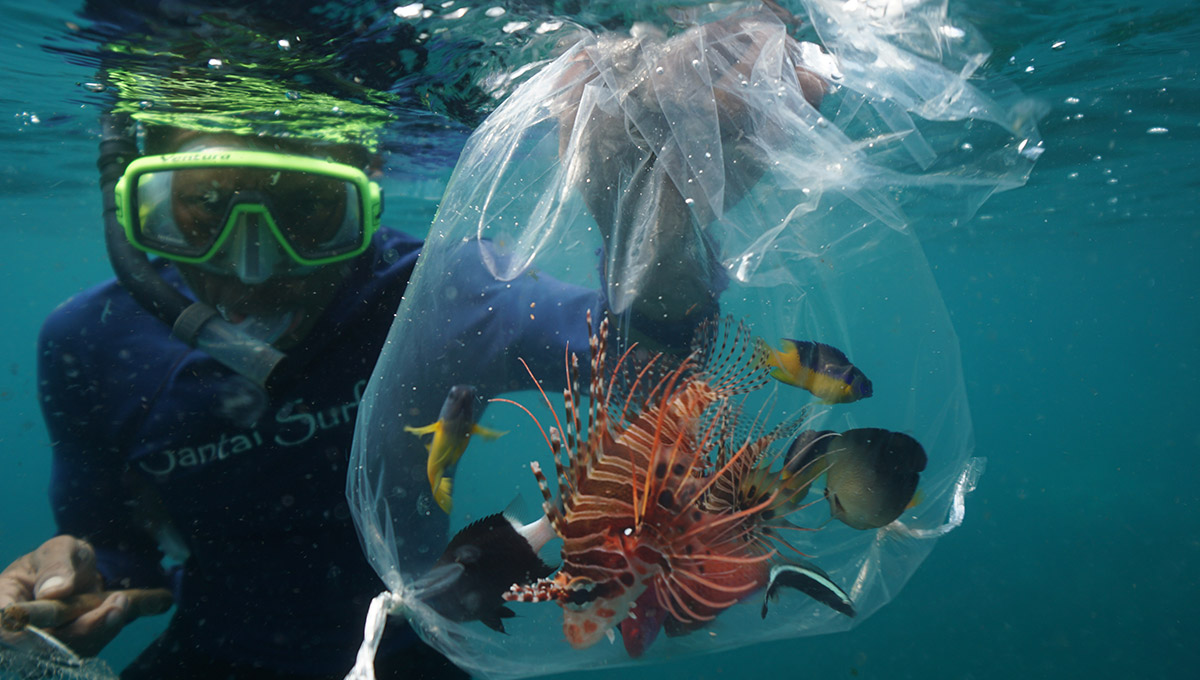
Reid received some funding from the National Geographic Society to travel to Lake Victoria for her master’s research, and for a subsequent project on bumphead parrotfish in the Solomon Islands east of Papua New Guinea.
In 2015, the society invited Reid and other recipients of its Young Explorer Grants to the organization’s headquarters in Washington, D.C., and encouraged them to apply for a new Collaboration Grant. Reid and Mikayla Wujec, who worked together on the parrotfish research, met a pair of their peers, Shannon Switzer Swanson and Caleb Kruse, and the foursome teamed up to launch the Reef to Aquarium project.
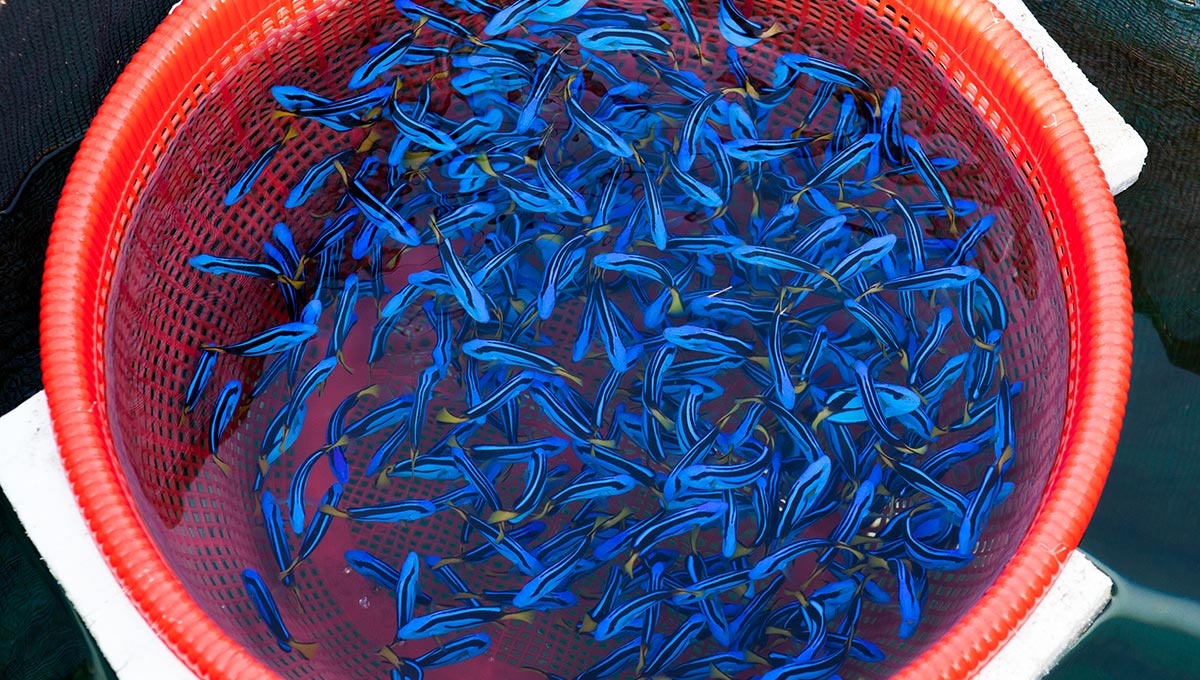
Launching Reef to Aquarium
Reef to Aquarium tracks the journey of saltwater fish such as the blue tang (the star of the animated film Finding Dory) from their native reef habit in Indonesia and the Philippines to aquariums in the United States — “a global supply chain,” says the project’s website, “that connects fishermen in small islands with hobby aquarists on the other side of the world.”
Reid and her collaborators, whose skills and experience include photography, multimedia development, diving, marine biology and environmental science, wanted to investigate this industry and find ways to make it more sustainable. Their dynamic website includes videos, pictures, maps and crisply written text and it lists steps that hobbyists can take. A documentary about the project is in production.
“We wanted to shine a light on this huge industry,” says Reid. “It’s worth billions of dollars, but most people know very little about it. We wanted to humanize it and understand why so many different types of people in different places are involved in this trade, and also to look at it from the perspective of the fish.
“I like doing work that gives me a reason to be in a place,” she continues. “I don’t like being a tourist or a spectator. Having an impact locally is the essence of what I want to do. If I’m not doing something of value to people locally, now and in the future, then I don’t know what I’m doing it for.
“I’ve always been interested doing work for the greater good, and it always feels like it pays off. People have responded so strongly to the Reef to Aquarium project. Fish can be an incredible point of contact between people and the natural world. Everybody seems to care.”
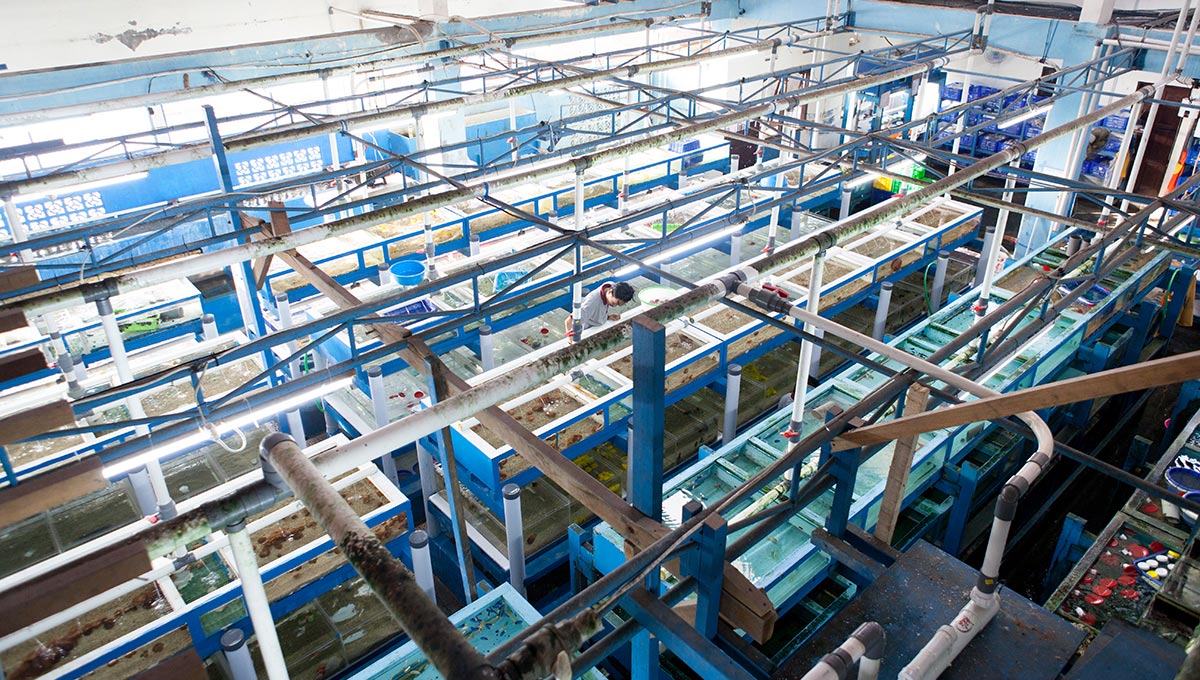
Mitigating Human Threats with Fish Research
There are five major varieties of Pacific salmon — king, sockeye, coho, pink and chum — in western North America. Fished during a patchwork of geographic and seasonal periods when harvesting is allowed, they face a range of human threats.
When a specific type of salmon is caught out of season and has to be released, how one handles this “bycatch” can have a significant impact on its ability to survive, says Reid. A physical injury or the stress of being caught, coupled with rising water temperatures, can make the fish more susceptible to disease.
To tag fish so their migration can be tracked, or to take tissue samples from their gills, Reid keeps salmon submerged in water-filled troughs. The tissue samples help her study their health and disease profiles; the electronic tags allow her fish research team to follow their movement using radio towers set up along the edge of a river.
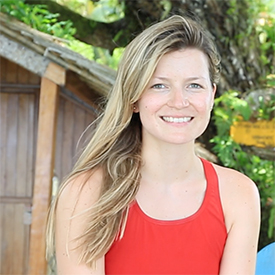
Andrea Reid
This summer, supported by the Royal Canadian Geographical Society, Reid will also be interviewing Elders who live in the upper, middle and lower sections of the Nass, Fraser and Skeena River watersheds. She will be asking open-ended questions about historical salmon harvesting practices, and about the impact of sport and commercial fishing, an approach she calls “social-ecological.”
“Taking all of this information together,” she says, “I can then begin to answer questions surrounding how different fisheries and practices affect salmon health, survival and spawning.”
Reid’s PhD is co-supervised by Carleton Biology Prof. Steven Cooke, director of the university’s Institute of Environmental Science, and Prof. Scott Hinch, director of the University of British Columbia’s Natural Resources Conservation Program. Cooke gives her a global perspective, while Hinch (who was Cooke’s postdoc supervisor) provides a focus on salmon conservation.
“Andrea is an exceptional student, connected to her roots yet very forward-looking in her thinking and actions,” says Cooke. “I am thrilled to have Andrea in my lab. Her interdisciplinary thesis combines the natural and social sciences to advance our understanding of Pacific salmonid conservation.”
Reid, who is the third year of her PhD studies, and will be teaching a Technology, Society and Environmental Studies special topic course on “Indigenous Knowledge and the Environment” (TSES 4010) at Carleton next winter, isn’t sure what the future holds.
She loves research and teaching, has opportunities to keep working closely with First Nations, and her status as a National Geographic Explorer continues to open doors. Later this year, along with Wujec and another National Geographic collaborator, Dalal Hanna, Reid will be launching Riparia, a NGO that will bring underserved youth on scientific river expeditions.
“At this point, I don’t have a clear path forward and that’s OK,” says Reid. “Really, I just want to keep doing what I’m doing now — something adventurous, aquatic and ambitious.”
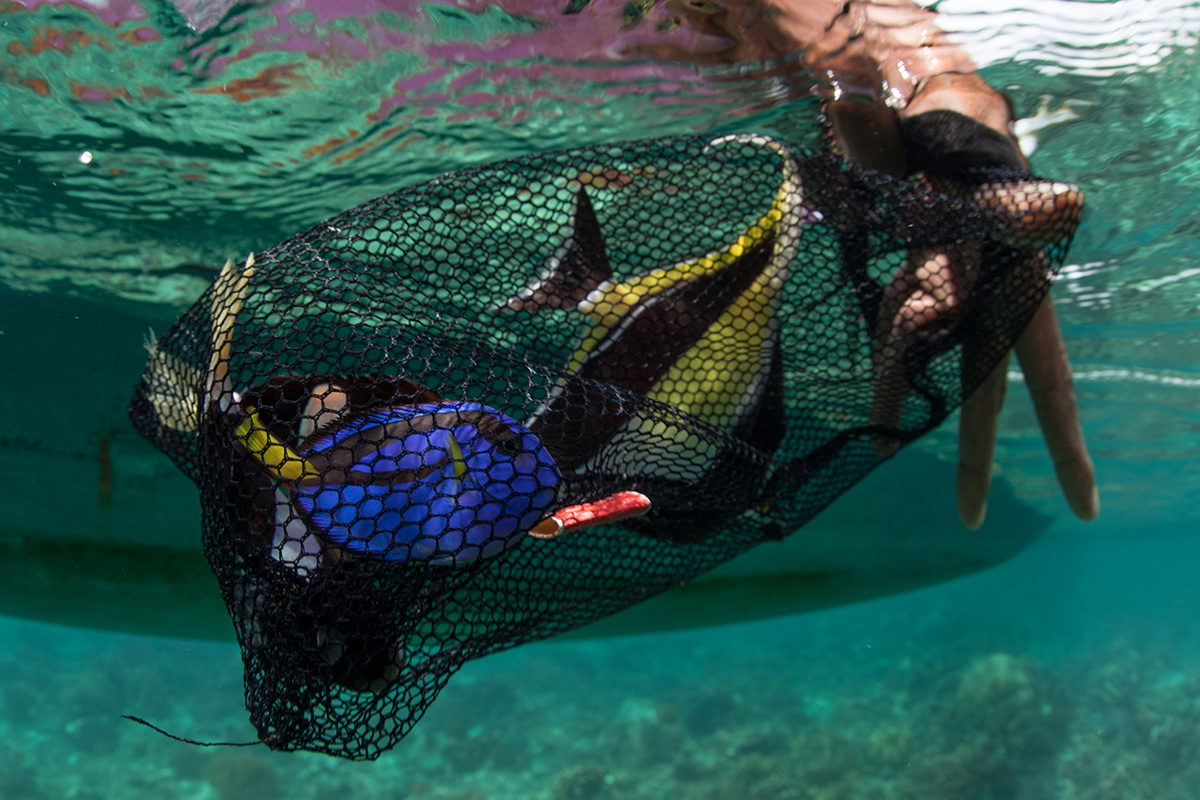
Monday, June 25, 2018 in Faculty of Science, Indigenous, Research
Share: Twitter, Facebook
